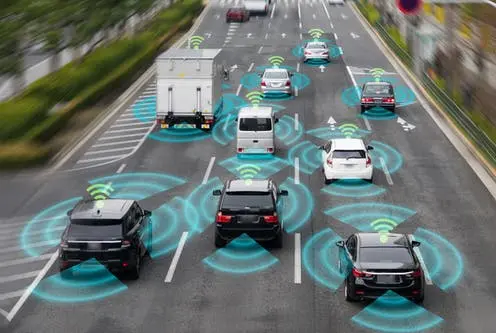Connected cars, also known as "smart cars" or "telematics," refer to vehicles that are equipped with internet connectivity and a range of sensors and technologies that allow them to communicate with other devices, such as other cars, road infrastructure, and the internet. This allows for a wide range of features and services that can improve safety, convenience, and entertainment for drivers and passengers.
Examples of features and services that may be available in connected cars include:
- Navigation and traffic updates: Connected cars can access real-time traffic data and provide up-to-date routing information to drivers.
- Safety features: Connected cars can use sensors and cameras to detect hazards, such as other vehicles or pedestrians, and provide warnings to drivers. Some cars can also automatically apply the brakes or steer to avoid collisions.
- Entertainment and infotainment: Connected cars can provide drivers and passengers with access to a wide range of entertainment options, such as music and video streaming, as well as information on weather, news, and sports.
- Remote control and monitoring: Connected cars can be controlled and monitored remotely using a smartphone app, allowing drivers to lock or unlock their car, start the engine, or check the fuel level, for example.
AI and Machine Learning (ML) are used in connected cars to improve safety, convenience, and entertainment for drivers and passengers. Some specific ways that AI and Machine Learning are used in connected cars include:
- Autonomous driving: AI and ML are used to enable vehicles to drive themselves. This involves using computer vision, sensor fusion, and other technologies to perceive the environment, make decisions, and control the car's movements.
- Advanced driver assistance systems (ADAS): AI and ML are used to enable features such as lane departure warning, automatic emergency braking, and adaptive cruise control. These features use sensors such as cameras, radars, and lidars to detect and respond to hazards on the road.
- Navigation and traffic updates: AI and ML can be used to analyze real-time traffic data and provide up-to-date routing information to drivers. This can help to reduce congestion and improve fuel efficiency.
- Predictive maintenance: AI and ML can be used to analyze sensor data from the car to predict when maintenance will be required, such as oil changes or tire rotations.
- Personalization: AI and ML can be used to learn the driver's preferences and provide personalized recommendations, such as music or news.
- Cybersecurity: AI and ML can be used to detect and respond to cyber threats such as hacking attempts.
Overall, AI and Machine Learning are powerful tools in connected cars as they can provide many advanced features, capabilities and services that can improve the driving experience and make it safer. They can also improve the performance and efficiency of the car and make it
Here are a few examples of Data Science, AI and Machine Learning related jobs in the Connected Cars field:
- Autonomous Vehicle Engineer: This role involves designing and implementing the algorithms and software needed to enable autonomous driving. This includes using computer vision, sensor fusion, and other technologies to perceive the environment, make decisions, and control the car's movements.
- Machine Learning Engineer: This role involves designing, developing, and implementing machine learning models to improve the performance of connected cars. They work on projects such as building predictive models for traffic prediction, Advanced Driver Assistance Systems (ADAS) or predictive maintenance.
- Data Scientist: This role involves using statistical and machine learning techniques to analyze large amounts of data from connected cars and other sources to extract insights and improve performance.
- Computer Vision Engineer: This role involves developing and implementing computer vision algorithms to enable features such as object detection and tracking, lane departure warning and automatic emergency braking.
- Intelligent Transportation Systems Engineer: This role involves designing, developing and implementing systems and technologies to improve the transportation infrastructure, such as traffic management systems, connected cars and smart cities.
- Cybersecurity Engineer: This role involves designing and implementing security systems to protect connected cars from cyber threats such as hacking attempts.
- AI Product Manager: This role involves overseeing the development and commercialization of AI-based connected cars products and services.
Note that these are just a few examples and in reality the roles and responsibilities may vary from company to company and based on the specific projects and goals.
